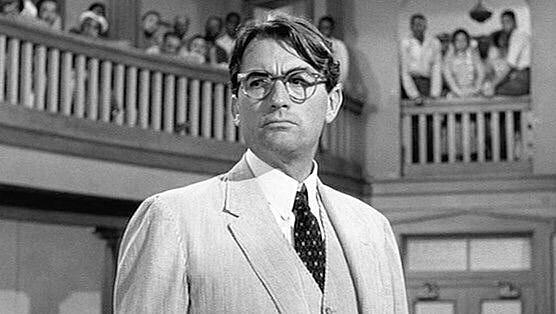
Lesson #2: What Makes a Great Character?
I have a theory that the best characters have three things in common: dimension, conflict, and empathy. Using three famous characters as examples, I will break down how authors use these three elements to great effect, and how you can, too.
1. Dimension

You’ve doubtless come across dull protagonists, and I’ll bet serious money the reason you found them boring was that they were too simple, too perfect, or just flat. Protagonists who do no wrong provide no conflict or tension — with only a small set of similar attributes, they become boring and cartoonish. If you actually knew someone monotonous and one-dimensional, would you want to hang out with them?
Atticus Finch from Harper Lee’s To Kill a Mockingbird is layered with internal paradoxes. He’s quiet and somewhat timid — his daughter often laments that he is weak and ineffectual. Yet, we discover there is power in his soft, steady words. He stands strong in the face of adversity. He turns out to be a dead shot with a pistol, too, which would seem to contradict his pacifist demeanor.
Atticus also has his flaws and failures. Under his sister’s influence, he tells Scout she needs to start living up to her lineage and become a lady. Our principled man is not without his moments of weakness, and thus he feels far more real.
2. Conflict

A strong character must have some sort of internal conflict that drives the plot in some way. Conflict is the momentum that keeps a story going, and grappling with issues related to the plot within the character keeps readers hooked.
And who is more conflicted than Carrie White, the namesake of Stephen King’s debut novel? As puberty hits, Carrie develops powerful telekinetic abilities. She also begins to grapple with her feelings for her abusive zealot of a mother. Carrie has no friends, and thus her mother is the center of her life — she truly loves her, but also fears and loathes her.
As Carrie struggles to control her powers, she also struggles to manage her feelings of anger and resentment. She is kind and sweet, and the core tension of the story comes from the reader wanting her to stand up for herself, but also fearing that she’ll lose the innocence that defines much of who she is.
3. Empathy

Empathy is most powerful when attached to villains. If you want a great, complex villain that sticks in your readers’ minds, you must make readers understand why your villains do the things they do. Creating a moment where the reader feels some empathy for the villain humanizes them, eliminating that cartoonish “Big Bad” feel.
Harry Potter’s Voldemort is a vile half-being who kills for pleasure and power, but you can, on some level, understand where his hatred of muggles comes from. Neither he nor his mother felt any love from the muggle half of his family. Sure, it excuses nothing, but you at least understand his origins. You also come to understand that despite how big he walks and talks, at his core, there is an insecure, angry, hurt child who constantly needs to prove that he can succeed without a mother or father. He is not a caricature; he is a living, breathing threat.
If you have at least one of these elements attached to your main characters, you’re in good shape. If you attach all three, you’ve got a character who leaps off the page and demands to be noticed.
I’ll see you tomorrow,
Hannah
Recommended Resources
- 12 Types of Characters Featured in Almost All Stories (blog)
- Liking vs. Caring About Characters (free video lesson with sign-up)
- Harper Lee’s To Kill a Mockingbird (book)
Brought to you by Hannah Sandoval
Hannah Sandoval is a freelance ghostwriter and copy editor who has worked on over two dozen manuscripts, and a published author herself. Her guilty pleasures are Rocky Road ice cream and crime TV shows. If you would like to connect with her to discuss assistance with your manuscript or character outlines, check out her Reedsy profile.

|
|||
|
Top publishing professionals can help make your writing dreams a reality. Sign up to meet them. |

|
Copyright © 2025 Reedsy, All rights reserved.